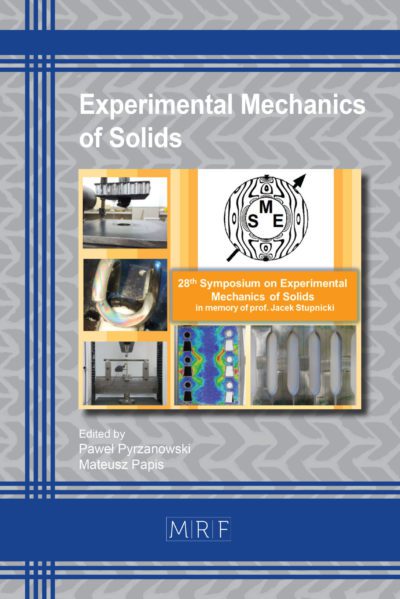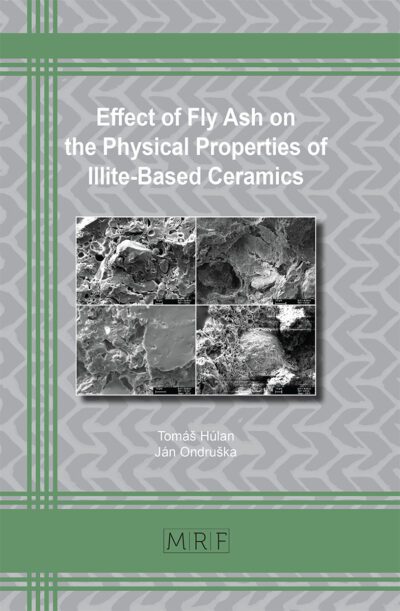Effect of Various Process Parameter of GTA Cladding on Surface Properties of Mild Steel: A Critical Review
Sujeet Kumar, Anil Kumar Das
download PDFAbstract. Mild steel has considerable importance in the field of engineering due to its high strength, good mechanical properties and low cost. However, its application is restricted in some industries where wear failure is considered as major problem. Wear attacks on the moving components from the upper surface, which proves wear is often a surface phenomenon. Many researchers have used the gas tungsten arc (GTA) cladding process to deposit a thick alloy layer, metal matrix composite layer and ceramic composite layer on low carbon steel substrate due to its high deposition efficiency, inexpensive, easy to operate and good performance. The metal matrix composite (MMC) coating makes the components reusable because of the synergetic effect of the combination of hard reinforcement and ductile matrix. Researchers also investigated that the deposition of hard coating synthesized by the in-situ method gives better properties rather than the ex-situ method due to the mismatch of the wetting properties between the various phases of ceramics materials during the ex-situ method. This review paper summarizes the literature related to the GTA cladding on mild steel and its applications. Further, it was also described here about the effect of coating materials, process parameters of GTA cladding on surface properties of mild steel such as resistance to wear, corrosion resistance and hardness. This review paper will provide reference for the researchers working in the GTA cladding area.
Keywords
GTA Cladding, Composite, Coating, Mild Steel, In-Situ Method, Microhardness, Wear Resistance, Microstructure, Nitrogen, Shielding Gas
Published online 3/25/2022, 10 pages
Copyright © 2022 by the author(s)
Published under license by Materials Research Forum LLC., Millersville PA, USA
Citation: Sujeet Kumar, Anil Kumar Das, Effect of Various Process Parameter of GTA Cladding on Surface Properties of Mild Steel: A Critical Review, Materials Research Proceedings, Vol. 22, pp 18-27, 2022
DOI: https://doi.org/10.21741/9781644901878-4
The article was published as article 4 of the book Functional Materials and Applied Physics
![]() Content from this work may be used under the terms of the Creative Commons Attribution 3.0 licence. Any further distribution of this work must maintain attribution to the author(s) and the title of the work, journal citation and DOI.
Content from this work may be used under the terms of the Creative Commons Attribution 3.0 licence. Any further distribution of this work must maintain attribution to the author(s) and the title of the work, journal citation and DOI.
References
[1] M. Prince, A. J. Thanu, and P. Gopalakrishnan, Improvement in wear and corrosion resistance of AISI 1020 steel by high velocity oxy-fuel spray coating containing Ni-Cr-B-Si-Fe-C, High temperature materials and processes. 31 (2012) 149-155. https://doi.org/10.1515/htmp-2012-0009
[2] K.Y. Chiu, F.T. Cheng, H.C. Man, Laser cladding of austenitic stainless steel using NiTi strips for resisting cavitation erosion, Mater. Sci. Eng. A 402 (2005) 126–134. https://doi.org/10.1016/j.msea.2005.04.013
[3] M. Masanta, S. M. Shariff, and A. Roy Choudhury, A comparative study of the tribological performances of laser clad TiB2–TiC–Al2O3 composite coatings on AISI 1020 and AISI 304 substrates, Wear. 271 (2011) 1124-1133. https://doi.org/10.1016/j.wear.2011.05.009
[4] P. Gopalakrishnan, Some refinements to boriding processes, Ph. D thesis, Bharathiyar University, Coimbatore, India (1999).
[5] S. C. Mishra, , B. C. Mohanty, and B. B. Nayak, Arc plasma nitriding of low carbon steel, Surface and coatings technology. 145 (2001) 24-30. https://doi.org/10.1016/S0257-8972(01)01291-9
[6] R. Iakovou, L. Bourithis, and G. Papadimitriou, Synthesis of boride coatings on steel using plasma transferred arc (PTA) process and its wear performance, Wear, 252 (2002) 1007-1015. https://doi.org/10.1016/S0043-1648(02)00056-X
[7] Teker, Tanju, Selçuk Karataş, and S. Osman Yilmaz, Microstructure and wear properties of AISI 1020 steel surface modified by HARDOX 450 and FeB powder mixture, Protection of Metals and Physical Chemistry of Surfaces. 50(2014) 94-103. https://doi.org/10.1134/S2070205114010213
[8] Ivanov, F. Yu , S. V. Konovalov, V. E. Kormyshev, V. E. Gromov, A. D. Teresov, and O. A. Semina, Structure and properties of Hardox 450 steel with arc welded coatings, In AIP Conference Proceedings. 1909, no. 1, p. 020073. AIP Publishing LLC, 2017. https://doi.org/10.1063/1.5013754
[9] Q. An, L.J. Huang, S. Jiang, X.T. Li, Y.N. Gao, Y. Liu, L. Geng, Microstructure evolution and mechanical properties of TIG cladded TiB reinforced composite coating on Ti- 6Al-4V alloy, Vacuum 145 (2017) 312–319. https://doi.org/10.1016/j.vacuum.2017.09.019
[10] M. Sharifitabar, J. Vahdati Khaki, and M. Haddad Sabzevar, Microstructure and wear resistance of in-situ TiC–Al2O3 particles reinforced Fe-based coatings produced by gas tungsten arc cladding, Surface and Coatings Technology. 285 (2016) 47-56. https://doi.org/10.1016/j.surfcoat.2015.11.019
[11] X.H. Wang, M. Zhang, B.S. Du, Fabrication in-situ TiB2–TiC–Al2O3 multiple ceramic particles reinforced Fe-based composite coatings by gas tungsten arc welding, Tribol. Lett. 41 (2011) 171–176. https://doi.org/10.1007/s11249-010-9701-6
[12] W.Q. Yan, L. Dai, C.B. Gui, In situ synthesis and hardness of TiC/Ti5Si3 composites on Ti–5Al–2.5Sn substrates by gas tungsten arc welding, Int. J. Miner. Metall. Mater. 20 (2013) 284–289. https://doi.org/10.1007/s12613-013-0725-4
[13] Agarwal, Arvind, and Narendra B. Dahotre, Comparative wear in titanium diboride coatings on steel using high energy density processes, Wear. 240 (2000) 144-151. https://doi.org/10.1016/S0043-1648(00)00357-4
[14] A. Zikin, E. Badisch, I. Hussainova, C. Tomastik, and H. Danninger, Characterisation of TiC–NiMo reinforced Ni-based hardfacing, Surface and Coatings Technology. 236 (2013) 36-44. https://doi.org/10.1016/j.surfcoat.2013.02.027
[15] Meng, Junsheng, and Zesheng Ji, Microstructure and technology research of in-situ synthesis TiN-TiB2/Ni composite coating by argon arc cladding, Physics Procedia. 50 (2013) 253-260. https://doi.org/10.1016/j.phpro.2013.11.040
[16] Hojjatzadeh, S. M. H., A. Halvaee, and M. Heydarzadeh Sohi, Surface alloying of AISI 1045 steel in a nitrogen environment using a gas tungsten arc process, Journal of Materials Processing Technology. 212 (2012) 2496-2504. https://doi.org/10.1016/j.jmatprotec.2012.06.006
[17] Huang, Her-Yueh, Effects of shielding gas composition and activating flux on GTAW weldments, Materials & Design. 30, (2009) 2404-2409. https://doi.org/10.1016/j.matdes.2008.10.024
[18] S. Dyuti, S. Mridha, and S. K. Shaha, Surface modification of mild steel using tungsten inert gas torch surface cladding, American Journal of Applied Sciences. 7 (2010) 815. https://doi.org/10.3844/ajassp.2010.815.822
[19] K. Easterling, Introduction to the Physical Metallurgy of Welding, Butterworth. (1992).
[20] K. Komvopoulo and K. Nagarathnam, J. Eng. Mater. Technol. 112 (1990) 131. https://doi.org/10.1115/1.2903299
[21] Sekhar, B. Raja, R. K. Nayak, S. R. Rout, and M. Masanta, Wear characteristic of TiC coated AISI 1020 mild steel fabricated by TIG cladding method, Materials Today: Proceedings. 26 (2020) 3288-3291. https://doi.org/10.1016/j.matpr.2020.02.466
[22] A. K. Das, S. Kumar, M. K. Chaubey, and W. Alam, Tungsten Inert Gas (TIG) Cladding of TiC-Fe Metal Matrix Composite Coating on AISI 1020 Steel Substrate, In Advanced Materials Research. 1159, (2020) 19-26. https://doi.org/10.4028/www.scientific.net/AMR.1159.19
[23] Meng, Junsheng, and J. Zesheng, Microstructure and technology research of in-situ synthesis TiN-TiB2/Ni composite coating by argon arc cladding, Physics Procedia. 50 (2013) 253-260. https://doi.org/10.1016/j.phpro.2013.11.040
[24] Meng, Junsheng, X. Shi, S. Zhang, M. Wang, F. Xue, B. Liu, W. Cui, and L. Bian, Friction and wear properties of TiN-TiB2-Ni based composite coatings by argon arc cladding technology, Surface and Coatings Technology. 374 (2019) 437-447. https://doi.org/10.1016/j.surfcoat.2019.06.015
[25] X. H. Wang, M. Zhang and B. Du, Fabrication In Situ TiB2–TiC–Al2O3 Multiple Ceramic Particles Reinforced Fe-Based Composite Coatings by Gas Tungsten Arc Welding, Tribology Letters. 41 (2011)171-176. https://doi.org/10.1007/s11249-010-9701-6
[26] X. H. Wang, S. L. Song, Z. D. Zou, S. Y. Qu, Fabricating TiC particles reinforced Fe-basedcomposite coatings produced by GTAW multi-layers melting process, Mater. Sci. Eng. A 441 (2006) 60–67. https://doi.org/10.1016/j.msea.2006.06.015
[27] Teker, Tanju, S. Karataş, and S. O. Yilmaz, Microstructure and wear properties of AISI 1020 steel surface modified by HARDOX 450 and FeB powder mixture, Protection of Metals and Physical Chemistry of Surfaces. 50 (2014) 94-103. https://doi.org/10.1134/S2070205114010213
[28] Z. T. Wang, , X. H. Zhou, and G. G. Zhao, Microstructure and formation mechanism of in-situ TiC-TiB2/Fe composite coating, Transactions of Nonferrous Metals Society of China. 18 (2008) 831-835. https://doi.org/10.1016/S1003-6326(08)60144-2
[29] W. Xinhong, L. Cheng, M. Zhang and Z Zou, Fabrication of multiple carbide particles reinforced Fe-based surface hardfacing layer produced by gas tungsten arc welding process, Surface and Coatings Technology. 203 (2009) 976-980. https://doi.org/10.1016/j.surfcoat.2008.09.020
[30] X. H. Wang, S. L. Song, Z. D. Zou, and S. Y. Qu, Fabricating TiC particles reinforced Fe-based composite coatings produced by GTAW multi-layers melting process, Materials Science and Engineering: A. 441, (2006) 60-67. https://doi.org/10.1016/j.msea.2006.06.015














